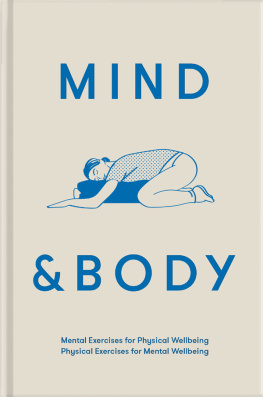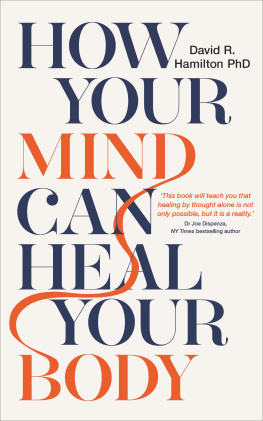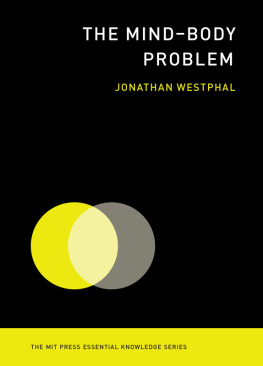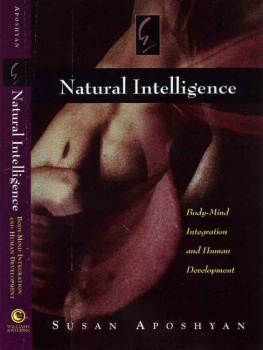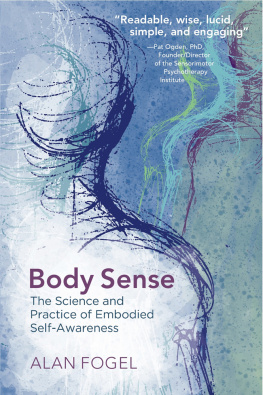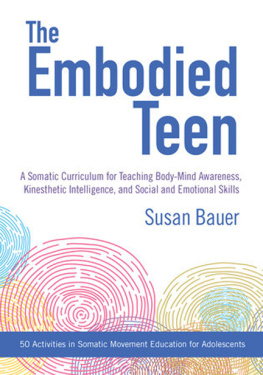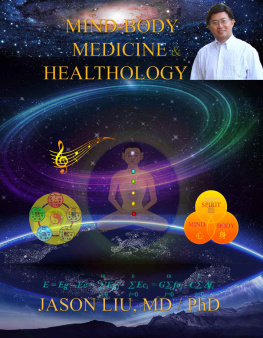Duoyi Fei
Beyond the Brain
How the Mind and the Body Shape Each Other

The Springer logo.
Duoyi Fei
Department of Philosophy, China University of Political Science and Law, Beijing, China
Institute of Foreign Philosophy, Peking University, Beijing, China
ISBN 978-981-19-9557-6 e-ISBN 978-981-19-9558-3
https://doi.org/10.1007/978-981-19-9558-3
This work was supported by [National Social Science Fund of China] ([18ZDA029]).
The Editor(s) (if applicable) and The Author(s), under exclusive license to Springer Nature Singapore Pte Ltd. 2023
This work is subject to copyright. All rights are solely and exclusively licensed by the Publisher, whether the whole or part of the material is concerned, specifically the rights of translation, reprinting, reuse of illustrations, recitation, broadcasting, reproduction on microfilms or in any other physical way, and transmission or information storage and retrieval, electronic adaptation, computer software, or by similar or dissimilar methodology now known or hereafter developed.
The use of general descriptive names, registered names, trademarks, service marks, etc. in this publication does not imply, even in the absence of a specific statement, that such names are exempt from the relevant protective laws and regulations and therefore free for general use.
The publisher, the authors, and the editors are safe to assume that the advice and information in this book are believed to be true and accurate at the date of publication. Neither the publisher nor the authors or the editors give a warranty, expressed or implied, with respect to the material contained herein or for any errors or omissions that may have been made. The publisher remains neutral with regard to jurisdictional claims in published maps and institutional affiliations.
This Springer imprint is published by the registered company Springer Nature Singapore Pte Ltd.
The registered company address is: 152 Beach Road, #21-01/04 Gateway East, Singapore 189721, Singapore
Contents
The Author(s), under exclusive license to Springer Nature Singapore Pte Ltd. 2023
D. Fei Beyond the Brain https://doi.org/10.1007/978-981-19-9558-3_1
1. Introduction
Duoyi Fei
(1)
Department of Philosophy, China University of Political Science and Law, Beijing, China
(2)
Institute of Foreign Philosophy, Peking University, Beijing, China
Keywords
Dualism Subjectivity Perspective Causation Value
In the contemporary philosophy of mind, physicalism and dualism are two rivals who dispute each other: reductionists in physicalism argue that the mind can be reduced to physical states, whereas anti-physicalists claim that reductionism is unsuccessful in explaining the mindbody problem, especially its inability to explain the qualia.
More than 400 years ago, Descartes, in the Second Meditation part of his volume Meditations on First Philosophy, argued for dualism, saying (1) I cannot doubt my own existence as a thinking being; (2) I can doubt the existence of my body; and (3) my mind is not the same substance as my body (Descartes ). In his view, the world is comprised of two types of entities, namely material entities and mental entities. For him, an entity is a thing that is directly inhabited by something else, that is, it does not require any other creature to exist and its existence is the cause of its own being. The meditator particularly emphasized that mind and body can exist independently of one another and that they both have a real nature.
Descartes assertions are highly in line with our common sense. According to one of our scientific understandings of the world, the only way we can explain our own existence is to recognize that everything is material. We have bodies, but our bodies are different from ourselves at least in the following sense. After a series of dramatic changes happen to our own bodies, we can still existevery one of us has a mind and can talk about changes in our own mind. At the same time, mental entities and material entities can interact with each other, although they are completely different. Each mental entity is extremely closely related to a particular material entity. Our body would respond to our plans and decisions, while our mind could receive signals from our body through sensory experience and gain knowledge about the state of our body and the state of the world around our body. Our senses are the only avenue through which the world can work on our mind.
Approaches of Exploring the Causal Relation Between Mind and Body
Discussions about the mind have been around since ancient times, which took the form of various statements about the soul in ancient Greek philosophy and have gradually evolved into an inquiry into the mind in modern times. On the one hand, the word soul has been inextricably intertwined with religion, to which philosophy is not devoted. On the other hand, Descartes mindbody dualism claims that the essential property of a material entity lies in the fact that it is spatially extended, while mind, as a mental entity, has no extension, and its essential property is that it thinks. As he insisted, our mind is not our brain, because it doesnt have a spatial location, and it still exists after our death or without our body. Linking the concept of mind to the activity of thinking and the phenomenon of consciousness turns out to be an act that distinguishes the mind from the soul, a theological-religious concept in ancient times including the Medieval Ages, which ignites the philosophical debate on the mindbody relationship (Hatfield ) and constitutes the focal point of the discussions about the mindbody problem in modern and contemporary times.
In the camp of dualism, some philosophers deny the possibility of mindbody interaction. Psychophysical parallelism claims that mental and bodily phenomena take place in two separate but parallel routes. The mental and physical realms operate in parallel: a mental phenomenon is only in the causal relation with other mental phenomena. Likewise, a physical phenomenon only exists in causality with other physical phenomena. However, there is no causal relation between mind and body. For instance, Baruch Spinoza argued that the order and connection of ideas are the same as the order and connection of things; an idea does not have as its cause the object of the idea, but another idea; and the body cannot determine the mind to thinking, and the mind cannot determine the body to motion (Spinoza ). Accordingly, different from Descartes, Geulincx in epistemology claimed that we cannot know things in themselves, but God can know things; we can only know ourselves.
And for Gottfried Leibniz, a representative parallelist, the mindbody problem is part of a more general problem of causal explanation. As Leibniz held, God first created the soul, or other real unity, in such a way that everything in it arises from its own nature, and has a perfect connection with things outside it. This makes all entities have perfect conformity with each other, which produces the effect as if these entities could communicate with each other (Leibniz ). The soul and the body are just like two very exact clocks made by God, each working according to its own laws while remaining in unity with the other. This unity is neither due to the interaction of the two nor because of Gods ready adjustment. Instead, it comes from the harmony pre-established by God. The theory of pre-established harmony denies the existence of direct interaction between mind and body (although Leibniz in his view does not deny causality here). That is to say, both the mind monads and the monads that constitute our body are constantly changing according to their nature, and this appears to the outside world as if the two are causally connected.


